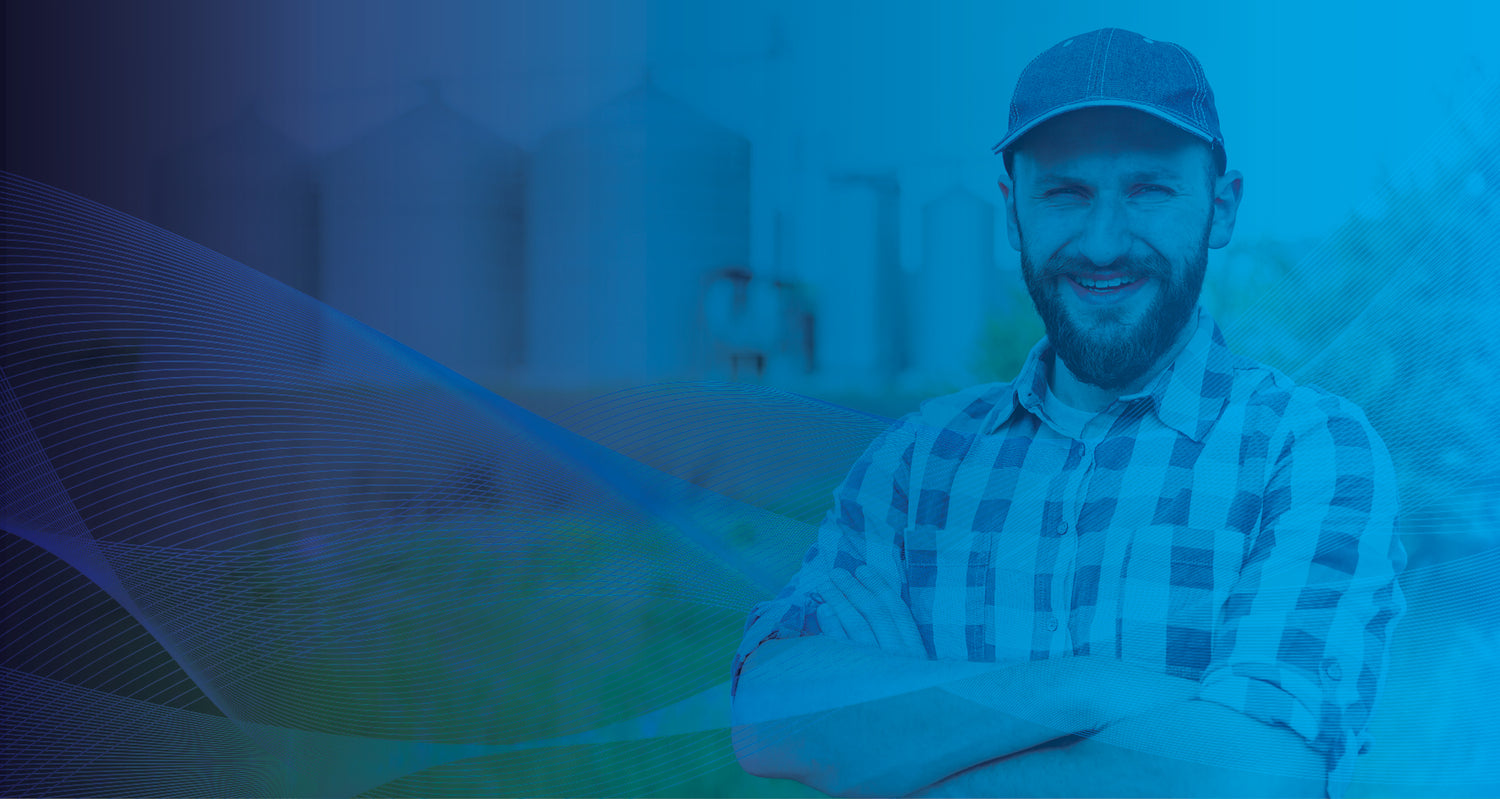Grain Silo Monitoring
Managing a fleet of silos either on one site such at a factory or processing facility is difficult. Even more challenging is when those grain silos are spread across customer sites all around the country. Either way, non-contact radar sensors from RadarIQ enable simple monitoring of levels.
Silos on farms are used for storing grain and feeing out to stock during miking times. From a grain distributors perspective being able to proactively manage customers needs to to improved customer experience and also the ability to save on logistics costs through more optimal deliveries.

In a more commercial setting such a factory site, it is really important to have real time measurements of the levels in side silos which enables accurate inventory control to ensure processes run smoothly without interruption.
Radar unlike other grain measuring technologies is maintenance free.
- There are no moving parts like with a plumb-bob system
- Dirt does not affect the sensor, unlike ultrasound, lidar, or laser sensors.
- Being completely sealed, the sensor is not affected by weather no matter how bad.
<image of the radar sensor covered in dust>
Radar has the added benefit of being completely temperature stable, unlike other continuous measurement sensors which can fluctuate their measurements with a few degrees of temperature change.
The RadarIQ D1-SILO sensor comes in two versions:
- A stand-alone sensor
- A cloud-connected full solution
Stand Alone
The stand alone sensor is a tiny 33mm in diameter, making it easy to install. The sensor is available in two variants. The RS485 (MODBUS) version is for connecting to a PLC or other monitoring apparatus, while the UART version allows for direct-connecting to custom electronics. An IO-Link version of the product is also in the pipeline. The stand alone sensor is still under active development. Contact us to find out more about the timelines for delivery.


Cloud
Getting data from the top of a silo can be logistically challenging. Wires need to be run from the top of the silo to the PLC or on-site control system. If there is no on-site control system, this adds another layer of difficulty. This is where having a cellular-based sensor, along with a suite of cloud-based data processing tools is the ideal solution.
The RadarIQ D1-Grain-IoT is a package which includes:
- The RadarIQ-D1-Grain sensor
- Cellular modem which works on the latest CAT-M and NB-IoT networks
- Cloud servers for receiving the data and processing the data
- Data analysis and presentation through a user-friendly interface

For more information about the cloud solution, click here.
Why Radar is the best option for measuring silos
There are two types of measurement: Disrete measurement and continuous measurement.
Discrete measurement is where measurements are taken at a few points only. This can give you a high, medium or low measurement only. These systems can be harder to install than a continuous measurement system and offer inferior results. Discrete sensor are not very common these days.
Continuous measurement systems, as the name implies, are able to measure grain continuously, at any level. Continuous systems provide a much higher resolution of data and are also typically easier to install, requiring only one piece of technology installed.
There are a few types of continuous meaurment sensor used for silos:
Mechanical plumb bob, or yo-yo, level sensors
These drop a weight attached to a cable down to the product surface, then reel it back in. The sensor electronics track the time it takes to complete this process, which in turn can be used to calculate the level. This sensor’s method of operation works well in theory, but over time, measurement accuracy and reliability begin to deteriorate as mechanical parts within the sensor experience wear out. This type of sensor also requires considerable amount of power to operate the motor, which requires power caballing to the top of the silo.
Ultrasound
Ultrasonic sesnors are not used much for grain monitoring, for a good reason. Ultrasonic sensor must be open to the environment in order to send and receive ultrasonic sound waves. Unfortunately grain silos are very dusty environments and the sensor soon get covered in dust which prevents them from working.
Lidar
Fixed position lidar sensors are another option for measuring grain silos. Fixed position lidar sensors send out pulses of light in one or more directions and watch for the reflection back. The time between send and receive can be used to calculate the distance. This works well in theory, but because they use light, dust soon becomes a problem.
Radar
Radar uses similar principals as lidar but uses the microwave part of the electromagnetic spectrum. Like lidar, radar sends out pulses and listens for the reflection back, but unlike lidar the pulses are impervious to dust. Radar can also send out many beams at once allowing for a much more detailed view of what is going on inside the silo.

Distance and Velocity
River Level Sensing, Silo Monitoring, Wave Measurement, Industrial Automation - We produce reliable Radar Solutions for robust measuring in indoor and outdoor environments.


